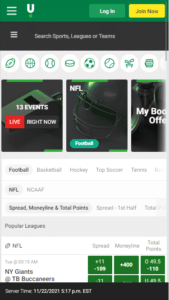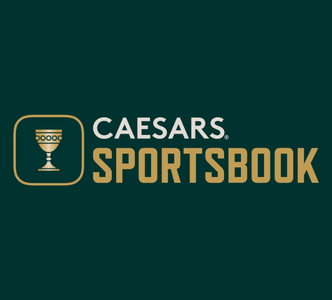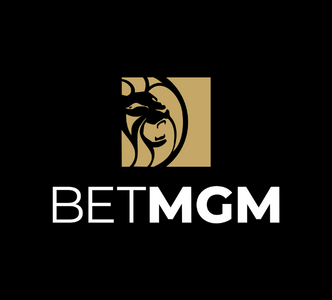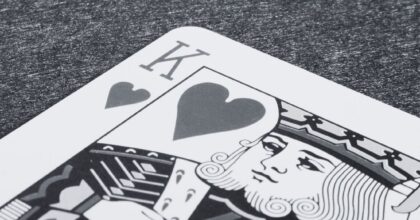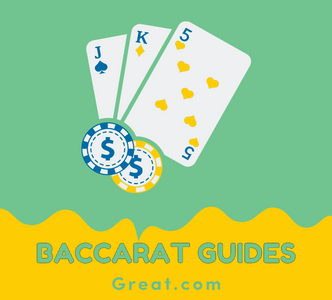Sports Betting Odds Explained
Understanding the Odds in Sports Betting
Is plus or minus good in odds?How do odds work in sports betting? You may have a lot of questions when it comes to understanding sports betting odds.
Because legalized sports betting and online sports betting are becoming popular throughout the U.S., it’s important to know what sports betting odds mean.
If you’re considering betting on sports, you first need a solid understanding of sports betting odds and how they impact your betting. This guide to understanding sports betting odds is the perfect introduction to betting odds in sports.

Our Other Sports Betting Guides
This is our guide to understanding sports betting odds, but if you’re looking for more informatino about sports betting — check out our other sports betting guides below.
Warning: foreach() argument must be of type array|object, string given in /nas/content/live/greatdotcom/wp-content/themes/great-com/lib/ratings.php on line 127
Warning: foreach() argument must be of type array|object, string given in /nas/content/live/greatdotcom/wp-content/themes/great-com/lib/ratings.php on line 89
Best Overall New Jersey Casinos for Sports Betting
If you need an online casino to bet on sports, consider joining the sports books at some of the best online casinos in New Jersey.
Promotions
rating
Rating
ABV 100
ABV
Type of bonus
Type
Bonus code
Code
Max bonus
Max
Wagering
Wag.
Extra bonus
Extra
Min deposit
Min
Expiry time
Exp.
Free bonus
Free
Launch date
Launch
Full review
Rev.
A Guide to Sports Betting Odds
Need help understanding sports betting odds?
This sports betting odds guide covers some of the most important methodology and techniques used by sportsbooks when setting odds for sports gambling. The topics we cover in this sports betting odds guide include:
Jump to Other Sports Betting Guides
Popular Sportsbooks at New Jersey Online Casinos
Below are some of the most popular online sports books available at NJ online casinos. If you’re considering betting on sports in New Jersey, try the sportsbooks below.
Understanding the Odds in Sports Betting
Having a solid foundation in reading and understanding odds is key when making any sort of bet, whether it’s casino gambling or sports betting. Not understanding your betting odds would be foolish — how else could you know your likelihood of getting an actual payout on your wager? Knowing how to read betting odds, in all the different ways they can be presented, means being prepared for all possible results.
In simple terms, the odds on a bet tell you how likely a sporting outcome is. They can also educate you on how much money you could win on that bet.
Generally speaking, if the odds are low, this suggests that the outcome presented is likely to happen. So, the lower the odds are, the greater your chances of winning that bet. On the other hand, if the odds are low, your potential payout is also lower.
Of course, the flip side is also true. If the odds are high, that means that the outcome is less likely, and your chances of winning that bet are actually lower. But if you do win, you’ll get a much higher payout.
Odds are always presented numerically, and these numbers depict the ratio between the amount of money you’ve staked versus how much the bookmaker has staked. If you’re seeing odds that are listed as 2 to 1, that means the bookmaker has staked twice the amount that you have on that outcome.
These numbers are calculated probabilities. Of course, the probabilities would be easier to devise if we were playing a truly randomized game. Rolling one die has just six possible outcomes, and so you have a one-in-six chance of rolling a 3 for every time you roll that die. To present that as mathematical odds, you have a 16.67% chance of rolling that 3.
There are three different ways to express sports betting odds: fractional, decimal, and moneyline. While each appears vastly different, they all still present the same information and create no variation when it comes to payouts. They’re ultimately just the different ways you’ll see odds written out in different parts of the world.
Sports Betting Odds Notes
- All sports betting odds are presented numerically
- Odds refer to your chance of winning and your potential payout
- There are 3 ways to present sports betting odds: fractional, decimal, and moneyline
Fractional Odds Explained
You’ll most likely see fractional odds presented in the United Kingdom. Simply, fractional odds let you know how likely it is for a given event to occur, shown as a fraction like 8/1.
If you think of fractional odds as X/Y, then you can apply this formula to determine the implied probability as a percentage:
Y / (X+Y) x 100 = %
Here are some sample implied probabilities that are expressed fractionally:
- 8/1 odds: 1 / (8+1) x 100 = 11.1% chance
- 3/1 odds: 1 / (3+1) x 100 = 25% chance
- 1/3 odds: 3 / (1+3) x 100 = 75% chance
- 9/4 odds: 4 / (9+4) x 100 = 30.7% chance
You can also use fractional odds to calculate how much you can win for every unit you’ve staked. If you’re betting on an event with 8/1 odds, you can win 8 units for every 1 unit you stake. For 9/4 odds, you can win 9 units for every 4 units you stake. And so on.
If you use the same X/Y concept as above, for every value of Y that you stake, you can win back X (plus your original stake getting returned to you).
- 8/1 odds: For every $1 you bet, you can win $8. Total payout = $9
- 3/1 odds: For every $1 you bet, you can win $3. Total payout = $4
- 1/3 odds: For every $3 you bet, you can win $1. Total payout = $4
It’s all really straightforward and makes it easy to not only calculate the outcome’s probability but also how much you can win.
What Are Fractional Odds?
Fractional odds in sports betting is simply the odds displayed in a fractional form (i.e. 7/1).
Decimal Odds
For some sportsbooks, fractional odds are the only way to go. Others feel that decimal odds are easier to understand. It’s definitely one of the most common approach to displaying odds on betting websites.
Decimals show the potential return if you’ve made a successful bet, relative to your original stake. The reason why people like decimals so much is that it’s easy to calculate an outcome’s implied probability:
(1 / decimal odds) x 100 = %
Here are some sample odds in decimal form and how they translate to implied outcome probabilities:
- 8.0 odds: (1 / 8) x 100 = 12.5% chance
- 3.0 odds: (1 / 3) x 100 = 33.3% chance
- 2.5 odds: (1 / 2.5) x 100 = 40% chance
- 1.25 odds: (1 / 1.25) x 100 = 80% chance
Another benefit to decimals is that, just like with fractional odds, you can use the given implied odds to calculate your potential winnings like so:
(odds x stake) = total payout
Here are those same sample decimal odds and their potential payouts, each with a $20 stake:
- 8.0 odds: (8.0 x $20) = $160
- 3.0 odds: (3.0 x $20) = $60
- 2.5 odds: (2.5 x $20) = $50
- 1.5 odds: (1.25 x $20) = $25
Of course, if you’d rather calculate your actual profits instead of your total payout, you’d simply subtract your original stake at the end of the formula:
(odds x stake) – stake = profits
- 8.0 odds: (8.0 x $20) – $20 = $140 profit
- 3.0 odds: (3.0 x $20) – $20 = $40 profit
- 2.5 odds: (2.5 x $20) – $20 = $30 profit
- 1.5 odds: (1.25 x $20) – $20 = $5 profit
That simplicity is why decimal odds are so preferred and are becoming steadily more popular around the world.
What are decimal odds?
In betting, decimal odds is a simplified format that displays the odds as your payout multiplier. For example, 3.0 pays 3x your bet.
New Jersey Online Casino Reviews
Moneyline Odds
The moneyline format is most commonly seen in the United States — this is why you’ll often see it directly called American odds.
In this style, the implied odds are shown as either positive or negative numbers. The underdogs have their odds expressed with a plus (+) sign, which reveals the amount you would win for every $100 staked. At the same time, the favorites have their odds expressed with a minus (-) sign. This reveals the amount you would need to stake in order to win $100. In either one, you get back your initial stake plus your profits as your total payout.
Just like with fractional and decimal odds, you can calculate the probability of an outcome with moneyline odds. You can use these two formulas:
- Underdog/positive odds: 100 / (positive odds + 100) x 100 = %
- Favorite/negative odds: negative odds / (negative odds + 100) x 100 = %
Using a hockey match as an example, we can see each team’s likelihood of winning. These are the bookmaker’s moneyline odds:
- Los Angeles Kings: +185
- Tampa Bay Lightning: -140
You can calculate the implied probabilities of the underdog winning with the first formula (which only works if you use the positive number):
100 / (185 + 100) x 100 = 35.08% chance
To figure out the favorite’s probability, you would use the second formula and plug in the negative odds:
140 / (140 + 100) x 100 = 58.33%
So then the implied probabilities are as so:
- Los Angeles Kings: 35% chance of winning
- Tampa Bay Lightning: 65% chance of winning
So how can you use moneyline odds to figure out your potential winnings?
The bookmaker has set the lower probability on the Kings winning the match, with their odds at +185. If you want to bet on the Kings as the underdog, you’d have to stake $100 to potentially win $185. And if the Kings do win in an upset, you’d get your $100 stake back plus your $185 profits, so your total payout would be $285.
Now, the Lightning are the favorites in this matchup, so they have the higher probability of winning, with their odds at -140. If you want to bet on them because you think they’re a sure thing, you’d have to stake their odds at $140 to even be able to win $100. If they do pull off the win, you’d get your $140 stake back plus the $100 profit, so your total payout would be $240.
It’s a little messier, but if you want to think of it as a formula, here you go:
- Underdog: $100 stake + odds = total payout
- Favorite: $100 stake / (odds / 100) + $100 stake = total payout
Again, there’s no effective difference between these three methods of expressing odds. They all present the same information, just in different formats. They don’t change what your payout sizes would be.
What Are Moneyline Odds?
Moneyline odds refers to a format from sportsbook to display betting lines for a matchup. The moneyline format will use (+) to indicate an underdog and (-) to indicate favorites. If positive (i.e. +200) you have worse odds of winning, but stand to win larger amounts (2x your bet). If negative, you have better odds of winning but your winnings will always be less than your wager.
A Quick Note About Overround
You might have noticed that the implied odds in the moneyline scenario didn’t total out to 100%. This is because of something called overround.
The implied odds you see offered by sportsbooks rarely reflect the true odds of an event because the bookmark has to factor in a margin to cover their overhead. When they’re pricing up the odds for an event, the bookmaker will factor in a margin. When you add together all of the odds they’ve drawn up, the final figure will exceed 100%. That surplus is the overround, and that’s what bookmakers rely on to stay in business.
Can You Convert the Odds?
So we just said that these three different styles of odds expression don’t change your potential payout — let’s prove that to you by showing how you can convert all of the odds and compare them to each other.
Converting Fractional Odds to Decimal Odds
Here’s the most straightforward way to convert fractional odds into decimal odds: You divide the first figure in the fractional by the second figure, and then add 1.0 (because decimal odds include your stake). Here’s an example of 8/1 odds:
8 / 1 + 1.0 = 9.0
So, 8/1 odds = 9.0 odds. But how can I be sure that they equal the same potential payout? Let’s use the math we shared above.
| Odds | Probability | Potential Payout on $100 Stake |
| 8/1 odds | 1 / (8+1) x 100 = 11.1% chance | you bet $1, you win $8 or $100 stake + $800 profit = $900 |
| 9.0 odds | (1 / 9) x 100 = 11.1% chance | (9.0 x $100) = $900 |
Converting Decimal Odds to Fractional Odds
You can do the reverse, too, and convert decimal odds into fractional odds. It’s actually just the flip of the above formula: Take the decimal odds, subtract 1.0, and convert to a fraction (reducing to the simplest form). Here are those 9.0 odds again:
9.0 – 1.0 = 8 | 8 = 8/1
And as we saw, these odds offer the same payouts no matter which direction you’re converting.
Converting Fractional Odds to Moneyline Odds
It gets trickier to convert fractional odds into moneyline odds, but it’s still totally doable. There are different versions of the formula depending on if you’re dealing with odds that are over 1/1 or under 1/1.
- Over 1/1: (fractional odds) x 100 = moneyline odds
- Under 1/1: -100 / (fractional odds) = moneyline odds
So let’s dig into some examples:
- 8/1 odds: (8 / 1) x 100 = +800
- 1/3 odds: -100 / (1 / 3) = -300
And to check that the fractional and the moneyline odds equal the same potential payout:
| Odds | Probability | Potential Payout on $100 Stake |
| 8/1 odds | 1 / (8+1) x 100 = 11.1% chance | you bet $1, you win $8$100 stake + $800 profit = $900 |
| +800 odds | 100 / (800 + 100) x 100 = 11.1% chance | $100 stake + 800 = $900 |
| 1/3 odds | 3 / (1+3) x 100 = 75% chance | you bet $3, you win $1$100 stake + $33 profit = $133 |
| -300 odds | 300 / (300 + 100) x 100 = 75% chance | $100 stake / (300 / 100) + stake = $133 |
Converting Moneyline Odds to Fractional Odds
Thankfully this conversion of moneyline to fractional odds is more straightforward:
- Positive odds: moneyline / 100 -> simplest form
- Negative odds: 100 / moneyline -> simplest form
Let’s play with those same positive and negative odds from above:
- +800 odds: 800 / 100 = 8/1
- -300 odds: 100 / 300 = 1/3
Easy-peasy.
Converting Decimal Odds to Moneyline Odds
To convert decimal odds to moneyline odds, you need to break them down by whether the decimal is higher or lower than 2.0.
- 2.0 or higher: (decimal odds – 1) x 100 = positive moneyline odds
- Less than 2.0: -100 / (decimal odds – 1) = negative moneyline odds
Getting into some examples:
- 9.0 odds: (9.0 – 1) x 100 = +800
- 1.25 odds: -100 / (1.25 – 1) = -400
And to compare their probabilities and potential payouts just to be sure:
| Odds | Probability | Potential Payout on $100 Stake |
| 9.0 odds | (1 / 9) x 100 = 11.1% chance | (9.0 x $100) = $900 |
| +800 odds | 100 / (800 + 100) x 100 = 11.1% chance | $100 stake + 800 = $900 |
| 1.25 odds | (1 / 1.25) x 100 = 80% chance | (1.25 x $100) = $125 |
| -400 odds | 400 / (400 + 100) x 100 = 80% chance | $100 stake / (400 / 100) + $100 stake = $125 |
Converting Moneyline Odds to Decimal Odds
To convert moneyline odds to decimal odds, you need to break them down by positive and negative odds.
- Positive odds: (moneyline odds / 100) + 1 = decimal odds
- Negative odds: (100 / moneyline odds) + 1 = decimal odds
Examples using the same numbers as above:
- +800 odds: (800 / 100) + 1 = 9.0
- -400 odds: (100 / 400) + 1 = 1.25 odds
Sure, plenty of betting websites offer odds conversions for you. But now you understand how they actually work and can see that they all end up expressing the same outcomes in different ways.
Sports Odds Explained
- Odds and probability are how sportsbooks determine and communicate payouts for bets.
- Sportsbooks can display betting odds in different formats — even if they mean the same thing.
- Moneyline odds (+ or -) are the most popular format for U.S. sportsbooks.
Click below to visit some of the top online sportsbooks in New Jersey.
How Bookmakers Set Their Odds
So you understand how to read the different types of odds, but how do those odds even get determined in the first place? There are two major steps that bookmakers take when it comes to setting their odds.
Determining True Odds
The people setting the odds for sportsbooks will examine tons of different factors like:
- How the teams have been performing lately
- Patterns of outcomes between the teams over time
- Home win-loss records
- Away win-loss records
- Individual player statistics
- Injury reports
- Weather forecasts
This research and data analysis allows bookmakers to determine the probabilities of a specific outcome occurring. The more data they can gather, the more likely their odds are going to reflect the real probability.
Adjusting the Odds for Profit
However, the odds don’t reflect only the probability of an outcome — they also reflect the bookmaker’s own risk. Any fixed-odds bookmaker wants to ensure that each outcome is backed appropriately so they can make a profit, no matter which way the game goes. While you may be gambling with your own money, the bookmaker sure doesn’t want to gamble on one outcome over another.
In a “perfect book,” there would be no margin for the bookmaker and the implied probabilities of all outcomes would total 100%. But remember that the bookmaker has to create an overround in order to stay in business themselves. The overround is the percentage over 100% that a book has for a particular event.
After the bookmaker has done their best to calculate the true odds, they’ll then adjust those odds downward before offering them to bettors. This creates a margin for the bookmaker, which acts as a commission. This is called plenty of different names:
- Vigorish (a Yiddish slang term that comes from the Russian word for “winnings”)
- Vig
- Edge
- Juice
- Cut
- Take
Each bookmaker sets their own vig, which can vary depending on the event and the attractiveness of one outcome over another. You can see the vig clearly outlined next to a point spread or a totals/over-under bet, usually in parentheses. Meanwhile, in a win/moneyline bet, the vig is already factored into the line.
A standard vig you’ll see is -110, which is known as a 10-cent juice. This means that, for every dollar you wager on a spread, over-under, or moneyline bet, you’ll have to pay a 10-cent fee to the sportsbook.
Let’s say that University of Florida and Florida State are facing off in an upcoming football game. The bookmaker sets UF as the 7-point favorite, so that point spread will look like this in the book:
- Florida -7 (-110)
- Florida State +7 (-110)
That number in the parentheses is the vig that both sides have to pay — if you want to bet on either team, you need to stake $110 in order to win $100. If you lose the bet, you lose that $110 stake; if you win the wager, you get your original $110 stake back plus $100 in winnings, at a $210 total payout.
Does the Vig Affect the Odds?
After looking at how bookmakers set their margins for profit, it’s a natural question to ask whether the vig affects the real odds at all.
In short, no — the size of the vig does not change the actual odds once they’ve been set. Rather, gamblers’ betting patterns can force the bookmaker to increase or decrease their vig.
Betting Patterns Can Shift the Bookmaker’s Vig
Think of it like stocks: If there’s more interest in buying the stock of one particular company, its stock prices will go up. And if there’s more interest in selling that company’s stock, then its price will go down. This same principle applies in sports betting.
After the bookmaker has set their odds and applied their vig on top, if they see that everyone wants to bet on only one of those outcomes, everything will be skewed in one direction. In response, the bookmaker will increase their vig on the popular line (to discourage everyone from betting on that outcome) and decrease their vig on the less popular line (to encourage people to bet on that outcome instead and even things out a bit).
Need Gambling Help?
If you’re struggling with gambling addiction or believe you may be developing a problem, consider learning more about the options available to help you gamble responsibly or to sign up for the New Jersey Casino Gambling Self-Exclusion Program.
Why You Should Try To Understand Betting Odds
First off, you should understand the odds you’re facing with a wager because you should thoroughly grasp what you’re getting yourself into. Knowledge is power, after all.
It’s also important to understand how each type of odds expression works. This way you can choose to wager money on different betting sites worldwide and avoid careless mistakes on events that have odds you’re not comfortable betting on because you don’t know how to read them.
But overall, this information can help you shop around at different online sportsbooks and online casinos that offer sports betting. You can compare odds and vigs to see which site seems like it’s offering the best sports betting option for you, and you can know what your potential payout can be if the site doesn’t offer a calculator for that.
So go forth, find your new favorite sports betting site, and see if you can make a tidy profit with the help of this guide.
View Our Other Casino Guides
Would you like to learn more about other casino games besides slots? We have guides for roullete, blackjack, and even sports betting. Click through to read our other gambling guides.
Sports Betting Odds FAQ
The best odds for sports betting is really dependent on how you choose to bet on sports. If you are an aggressive sports bettor, you will prefer “long odds” meaning low probability, high pay out. If you are a more conservative gambler, you will look to gain edge on more probable bets that you still feel confident in. In other words, the best odds for sports betting is whatever fits your gambling style.
The million dollar question — how do sports books arrive at their odds? What’s interesting is how often these sports books are right or at least close in their lines. The analysis and decision-making used by sports books is often proprietary and undisclosed.
When betting on sports, your odds are the same as your payout. Would you eat at a restaurant if you had no idea what the food cost — or what you even ordered? No, and you wouldn’t bet on a sports if you didn’t know what you were wagering and how much you might win in return.

















